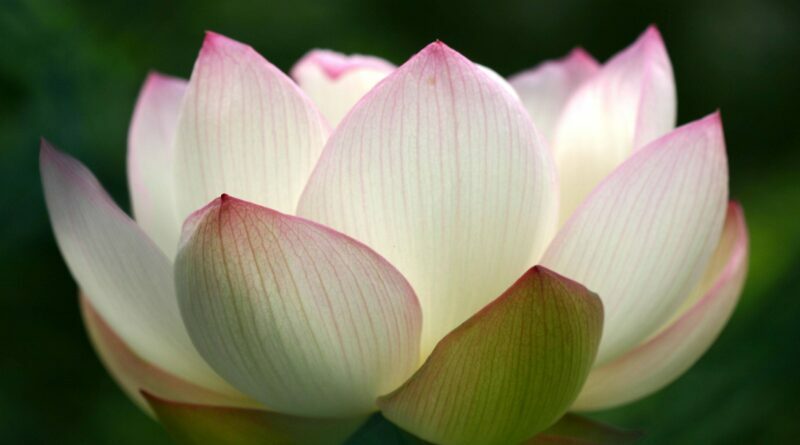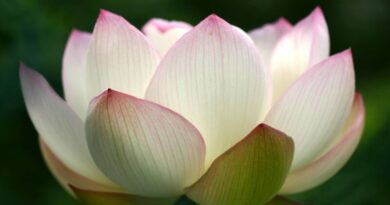A Mirror For The Mind
A Mirror for the Mind
There’s a passage in one of Ajaan Lee’s talks where he says that the breath is like a mirror for the mind. This is why we look so intently at the breath, because it’s going to teach us some very important lessons about the mind. In particular, it’ll show us how to find happiness by understanding where we cause suffering, because all the suffering that weighs the mind down comes out of the mind. But because it’s so difficult to look directly at the mind, we have to look in a mirror. It’s like trying to look directly at our own face. If you cross your eyes, you can see your nose, but there’s not much else of your face that you can see directly. So you have to look very carefully in a mirror. The more carefully you look in the mirror, the more you’re going to see of your face.
It’s the same way with the breath. The more carefully you look at the breath, the more you’re going to be able to see the mind.
As with any mirror, you’ve got to learn how to make sure that it’s flat and gives an undistorted reflection. So try to keep the breath as smooth and normal as possible. Now “normal” here doesn’t mean that it’s just ordinary. “Normal” means that it feels healthy for the body. That takes a lot of exploring right there, because many of us are used to breathing in unhealthy ways, ways that seem natural because we’ve been doing them so long. But if you start asking questions about the breath—how it could be better, comparing the different types of breath energy in the body with one another—you begin to see that things may be out of balance. The left side may be doing the work of the breath more than the right side. Or you may be using the muscles of the head too much, thinking that somehow you can pull the breath in through your nose by tightening the muscles in your head—or tightening the muscles of your neck, or your shoulders, all of which is totally unnecessary and doesn’t help the breath at all.
We picked up a lot of our ideas about breathing back when we were little kids, when we didn’t know very much, so it’s important that we stop and take a look at this very basic process here—how we breathe—and ask a few questions about how we can breathe better, in a way that’s more balanced. Check to see: Do you tighten up around pains in the body? Do you tighten up around old pains that are no longer there? Many times, as you work through the body or work through the breath, you’ll find a pattern of tension in the background that you hadn’t really noticed was there before. As you allow it to release, a memory of an old injury will come up. You begin to realize that you’ve been holding that tension since the injury.
So you poke around and explore, and as you do this you’re employing some very important factors of the mind. This is how you begin to see the mind reflected in the breath. There’s that chant we had just now, describing the first jhāna. The first jhāna employs directed thought and evaluation, which means that you direct your attention to the issues of the breath, and then you evaluate how it’s going, and in what ways you can make it better. Then, when it does go well, how can you make the most out of that sense of pleasure? Not by wallowing in it, but by allowing it to spread and directing it in certain ways to see if that helps, all the while learning how much direction is enough and how much is too much. Sometimes, if you change the breath energy too drastically, it’s going to give you headaches. So you’ve got to be careful.
As you do this, your powers of evaluation will develop, and your habit of directing your mind to one topic will get stronger. This, of course, has lots of uses. If you have other jobs to do as you go through the day, jobs where you have to keep your mind on topic, you learn that you’ve got a stronger ability to do that because you’ve exercised these activities with the breath. That’s one of the side benefits of meditation.
As you work with the breath and try and make it more comfortable, you’re dropping, as the Buddha said, unskillful mental qualities. You’re not really thinking about the sensual pleasures you might look for tomorrow or the sensual pleasures you enjoyed today. You’re focused simply on how the breathing feels right now in the body, the space of the body as you feel it from within, which is a higher level of pleasure. As you develop and work with the breath energy, you develop a sense of ease, well-being, pleasure, called sukha in Pali.
Then there’s the word piti, which usually is translated as “rapture,” but also means “refreshment.” Sometimes “rapture” seems a bit too strong as a description for what you feel. Other times, “rapture” seems just right, as when there’s a very strong, intense feeling of the energy going in waves through the body.
These two very pleasant feelings come from the fact that your mind isn’t engaged in sensuality. It’s more engaged in just looking at the breath in and of itself, engaged in directed thought and evaluation around the breath. You begin to see that your state of mind feels more at ease, nourished, stronger. You begin to see how you actually have the power to shape your state of mind in the present moment, simply through these processes of directed thought and evaluation that gave rise to very pleasant feelings.
There are also the perceptions and feelings you use to stay with the breath: These are called mental fabrications because they’re the mental processes that really have an impact on shaping your state of mind. In this case, the perception of the breath and the different ways of perceiving the breath allow it to become more comfortable. The sense of well-being, the sense of refreshment sooth both the body and the mind.
So you’ve got all the factors that the Buddha said shape the mind right here. You’ve got the breath, which influences the way you experience the body, and that has a huge impact on your emotions. When things that ordinarily would irritate you come up but the breath feels really comfortable and you’re very immersed in this sensation of comfortable breathing, you find that the irritation just doesn’t take over. It doesn’t grab hold of you as an emotion. It just passes by, passes by. It’s when a particular thought starts to hijack the breath: That’s when the emotion digs in and becomes more than just a thought.
This is one of the ways to protect the mind from unskillful mental states, by getting the breath really comfortable and using your powers of directed thought and evaluation to keep it that way, to allow the sense of ease that comes when you’re breathing in a healthy nourishing way to seep throughout the body, to suffuse the body, to permeate everything.
This is how you learn about the mind by dealing with the breath. You begin to see how these functions really are important. As the breath gets more and more calm, more full, the activity of the in-and-out breath gets more and more refined. The sense of ease and well-being gets more refined. It goes through the various stages of jhāna until everything just gets very, very still. Even the in-and-out breathing can get very still because the breath channels throughout the body have a sense of fullness and they’re all connected. If anything is lacking anywhere, the lack can be very quickly made up without your even having to bring the breath in or to expel it in the ordinary way. Just by keeping connected, everything stays nourished. Your breathing gradually stops, not because you’re trying to stop it, but simply because you don’t have any need to breathe.
That’s when the activities of the mind really get clear, because there’s no interference from the body. It’s like tuning a radio. If you have interfering noises, the signal isn’t all that clear. But as soon as the interference gets tuned out, there’s the signal, sharp and clear. When the movement of the breath calms down, the movements of the mind become more obvious because now your mirror is well polished. It’s smooth, flat. You can see clearly whatever goes on in the mind.
And because you’ve been made sensitive to these movements of directed thought and evaluation, then as soon as they happen, you know them. A perception arises and you know that. This is probably one of the major lessons you learn from concentration: what a huge role your perceptions play—“perceptions” here meaning the images, the mental labels you use to tell yourself: This is this, and that is that. It was the mental label of the breath that allowed you to stay with the breath, together with the mental label of stillness, and reminding yourself that the stillness doesn’t mean that you’re going to be starved of breath energy. Everything is simply full. You keep that perception in mind and it’s easy to stay with the sense of stillness. Some people, when they hit this level of stillness, get afraid. They’re not breathing and they’re afraid they’re going to die. Well, if the body needs to breathe, it’s going to breathe. You don’t have to worry about it. You keep that perception in mind and it enables you to stay here.
You start seeing how these perceptions have a huge impact on the way you experience things. The more clearly you see the mind in this way, the more clearly you’ll be able to see exactly what it’s doing that’s causing unnecessary stress anywhere in the body, in the mind. Because you see all of this as mental actions, and you see that these actions have immediate impacts. That’s how you can start dealing with the big problem of stress—understanding how it’s caused and how you can put an end to it—because it’s all happening right here. You’ve got a really clear mirror, a mirror that fills the body so that any action of the mind can be detected as soon as it happens.
This is why concentration is such an essential part of the practice. It gives you the strength to stay here continually. And as you get the mind to settle down, you’ve learned a lot about the mind in the process, so that when things are really still, you recognize the different movements in the mind for what they are.
So work on polishing your mirror, because it helps you see things that you wouldn’t have seen before—important things, the things that shape your life—and it gives you the opportunity to shape your life in a better way. It’s like looking in a mirror and seeing that you’ve got dirt on your face. Well, you can wash it off. Or like seeing that your clothes are not matched, so you can change your clothing. It’s not just a matter of sitting and watching things and saying: “Oh, that’s the way they are.” You see what can be changed for the better.
Make sure that the mirror is good and you know how to use it, and everything else will follow.



